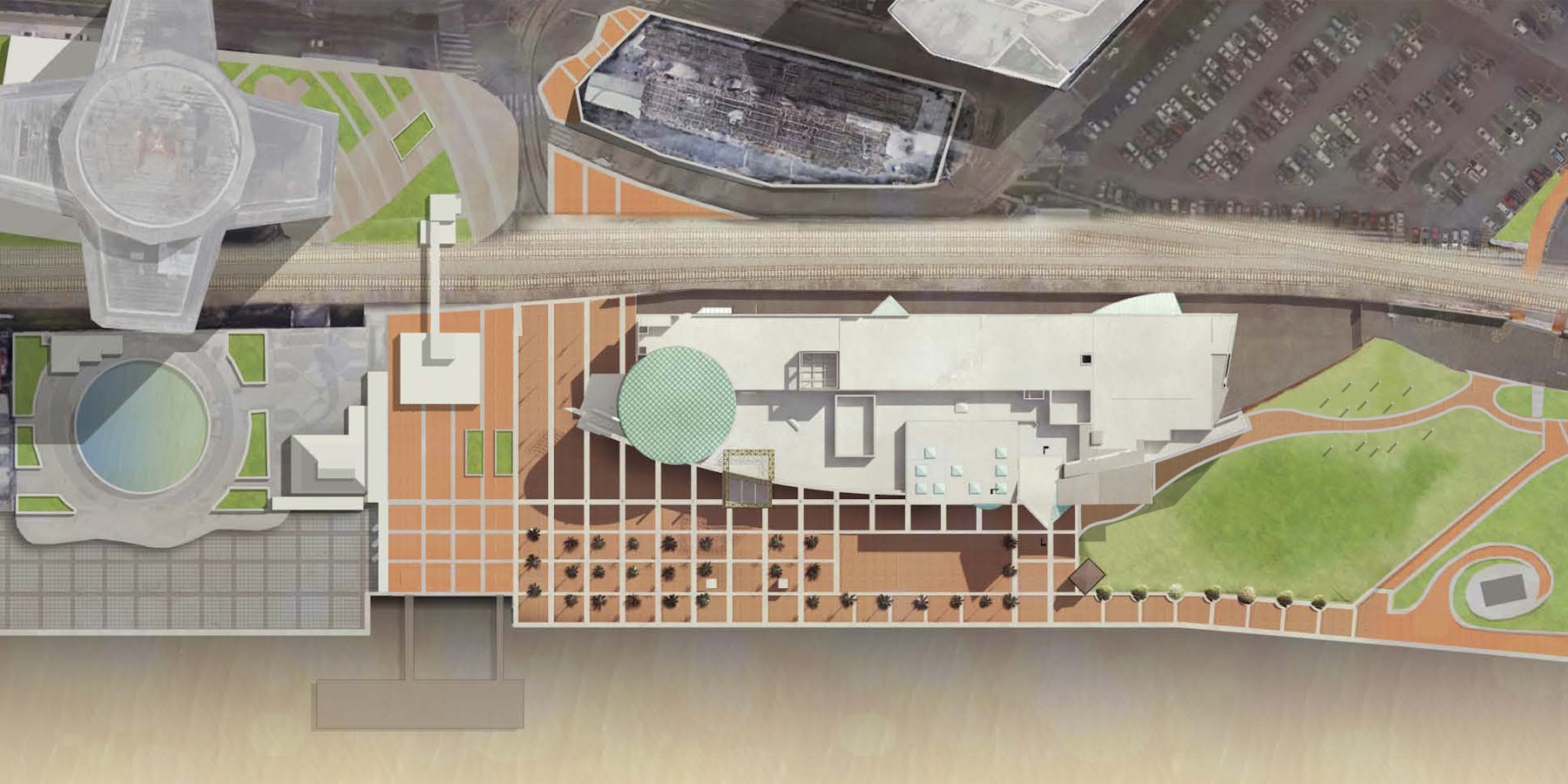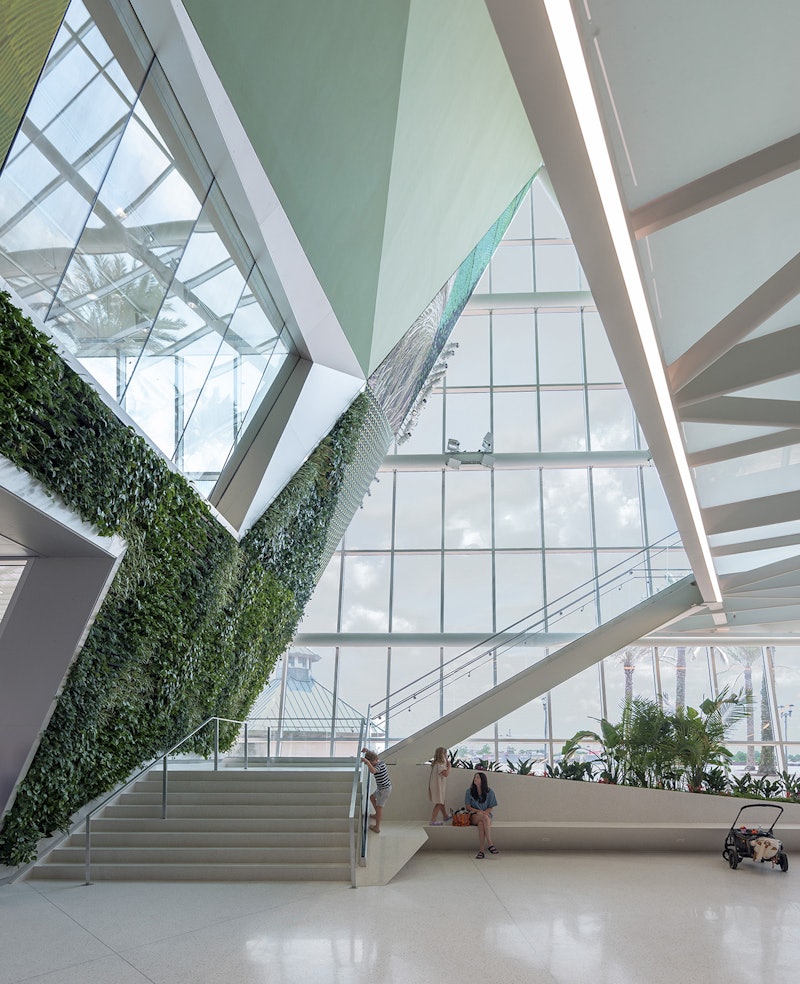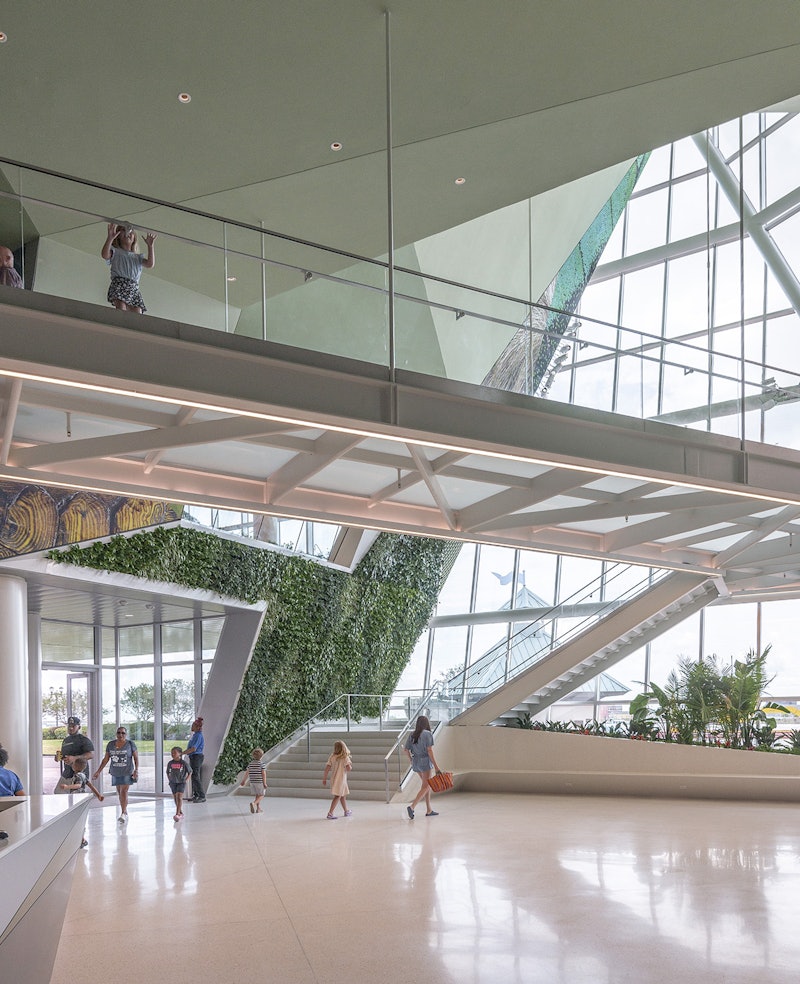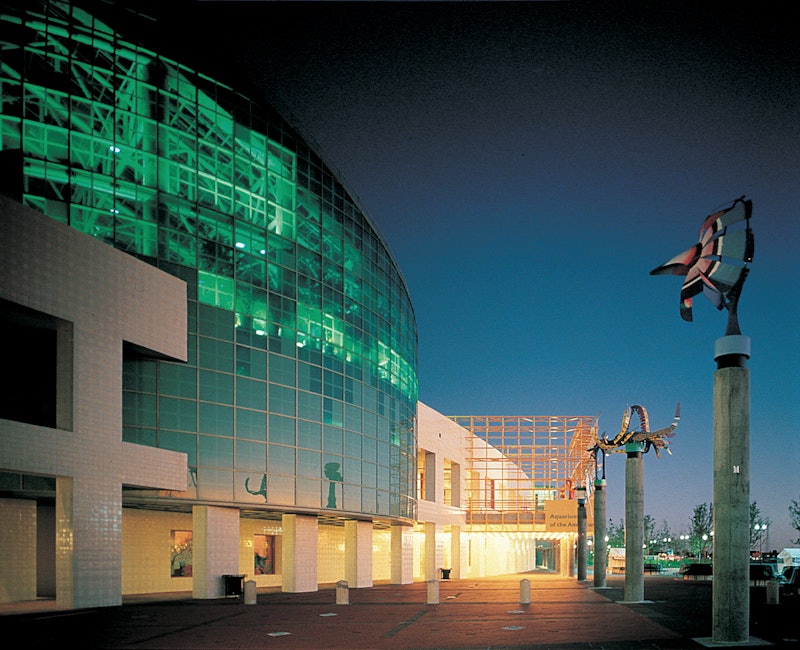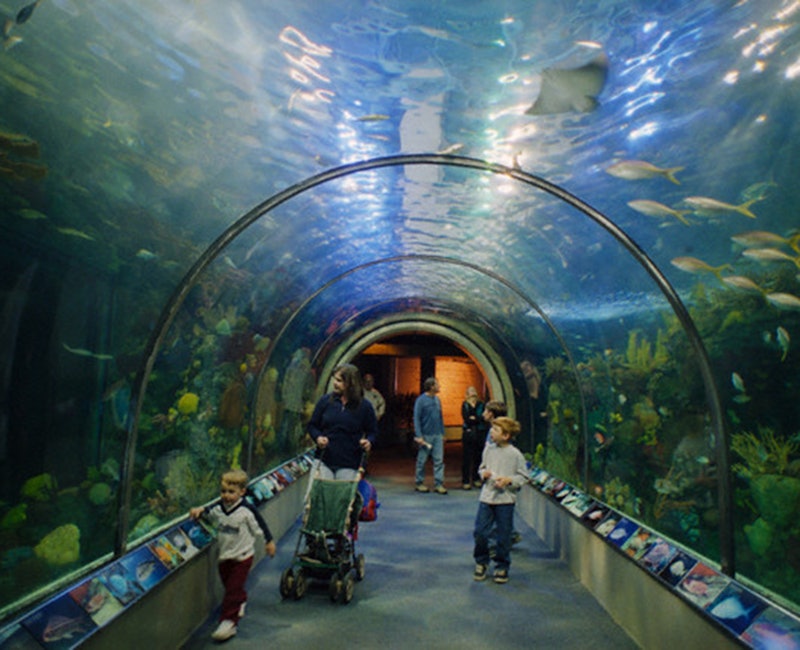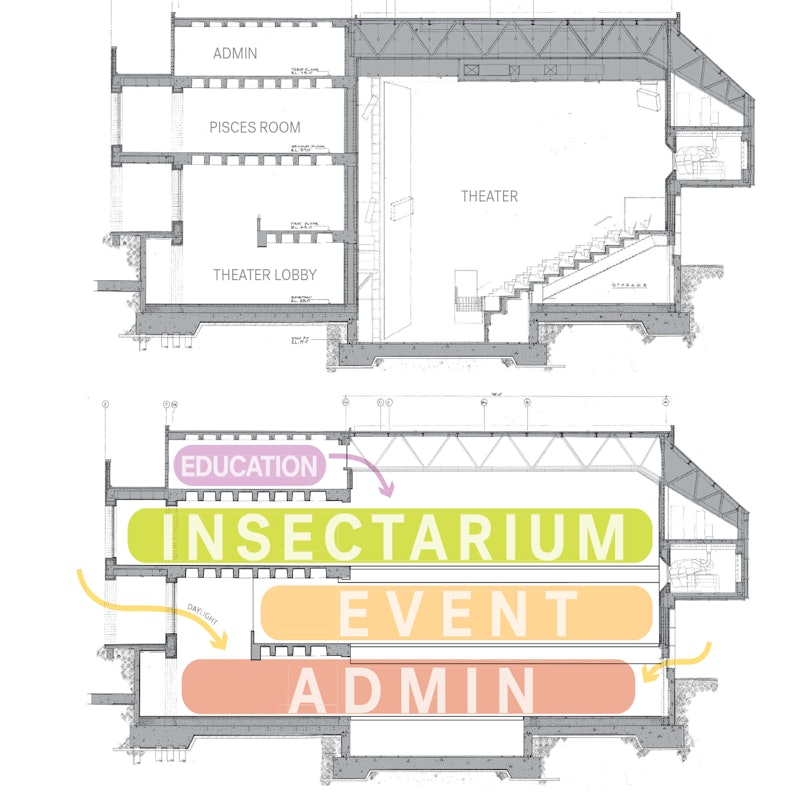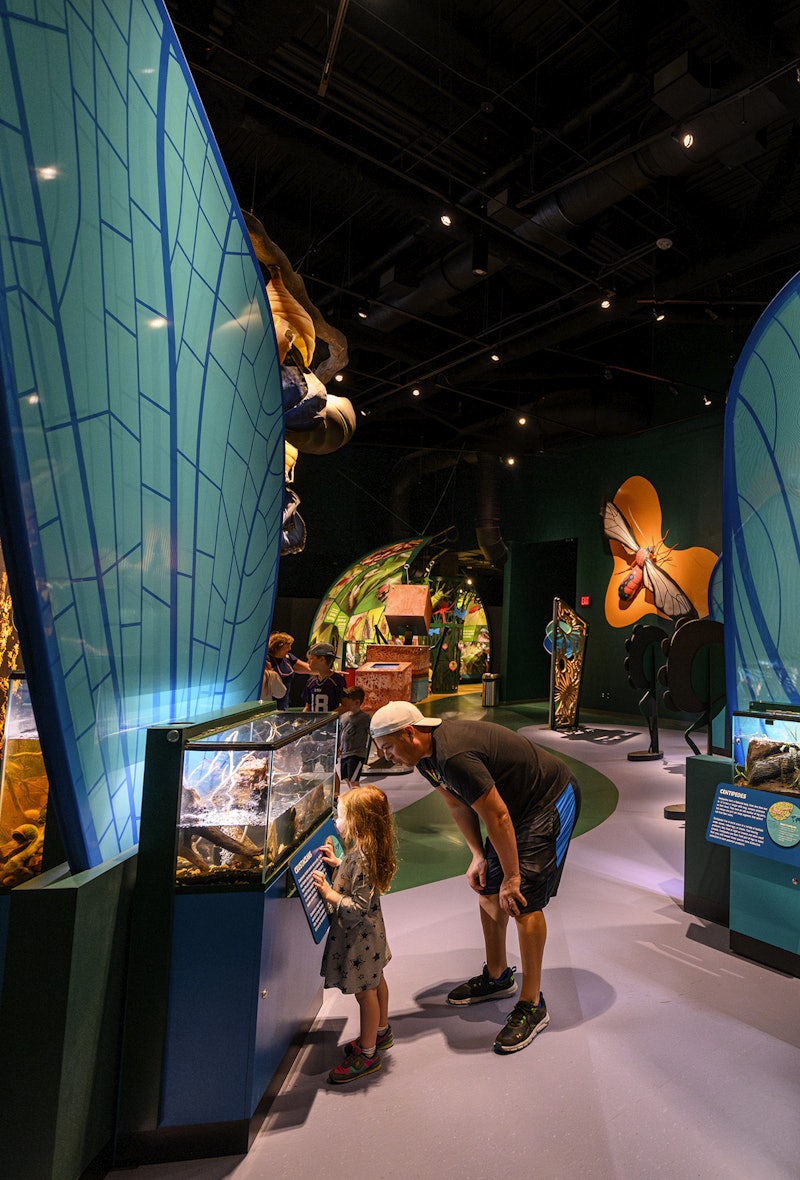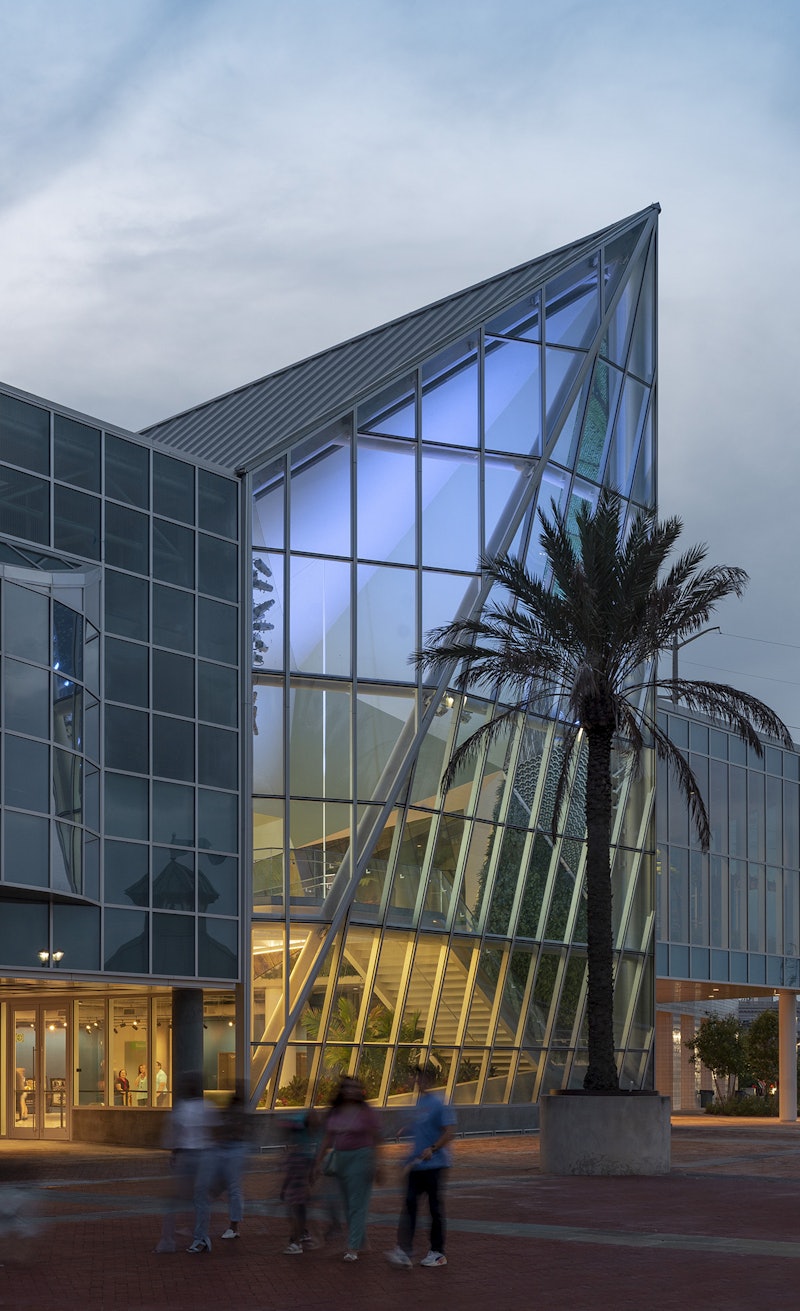

Audubon Nature Institute Aquarium & Insectarium
The Audubon Nature Institute (ANI) is one of the gulf south’s leading nonprofits dedicated to environmental conservation and operates ten museums and parks that strive to uphold and share this mission with a wider audience. In 2015, Audubon embarked on a journey to breathe new life into one of their longstanding assets—the ANI Aquarium of the Americas, an undertaking that included the relocation of their existing Insectarium from its previous home in the Customs House on Canal Street and the expansion and renovation of the Aquarium itself—two vital community offerings housed for the first time under one roof.
LOCATION
SIZE
YEAR OF COMPLETION
SERVICES
COLLABORATORS
Along with this new program, the scope included a crystalline-configured entry identifying the relocated main entry lobby and ticketing area, a new lobby grand stair and glass bridge, re-envisioning of the existing Mississippi River Gallery into a bayou experience, a refreshed Amazon Exhibit Gallery, introduction of a new Top-of-Gulf tank experience, two gift shops, and the reversal of the exhibit flow experience throughout the aquarium exhibit spaces.
Designed by New Orleans and Washington, DC-based architecture firm EskewDumezRipple, in collaboration with architects and exhibit designers CambridgeSeven (based out Cambridge, MA), the project is a stunning revitalization of a civic amenity in the heart of New Orleans downtown, adjacent to the Mississippi River and the French Quarter.
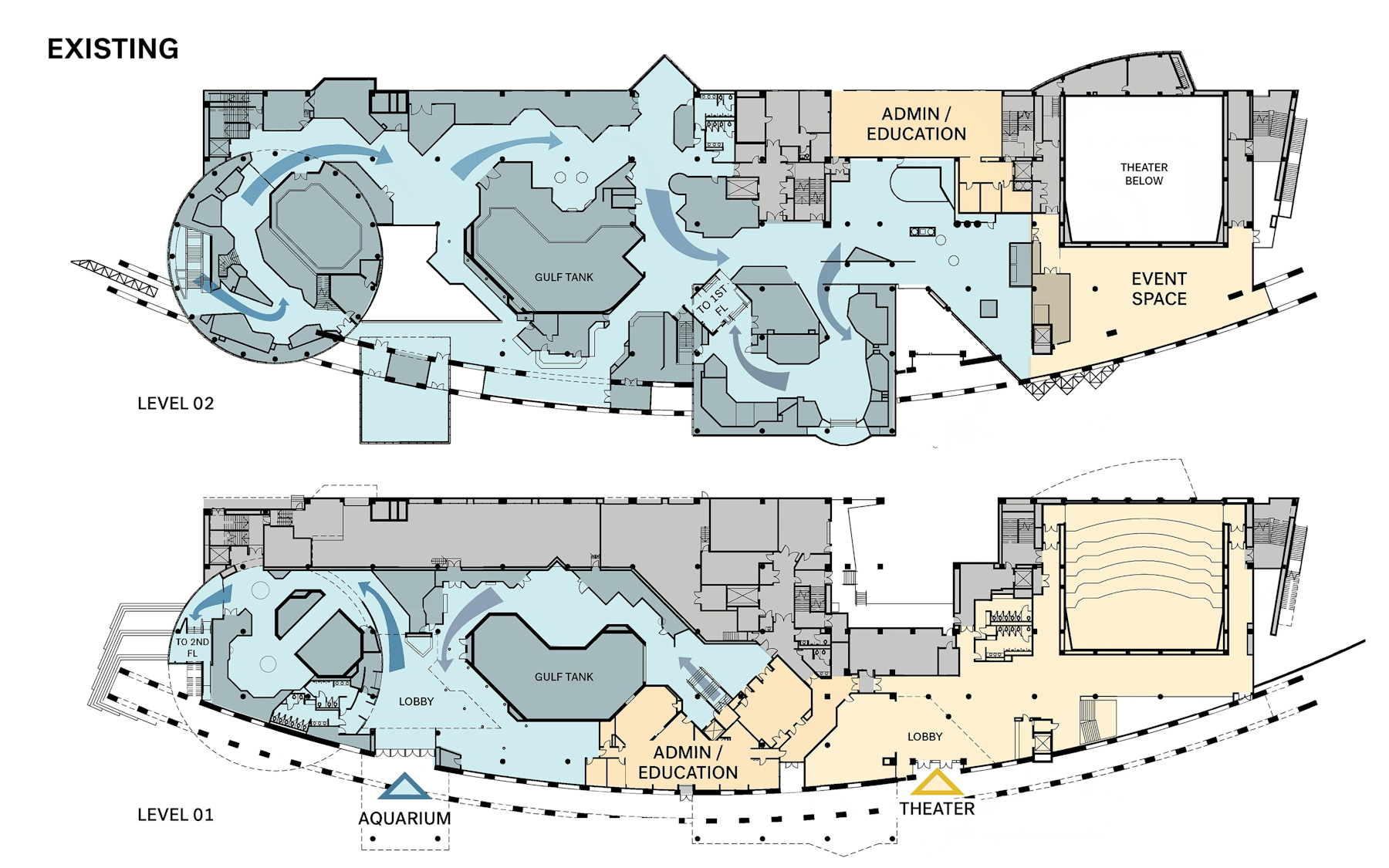
One of the unique aspects of the project involved the reversal of visitor flow through the exhibits, which helped standardize the departure point from the new shared lobby and ticketing area.
The project is a legacy one for EDR, and the latest in a longstanding professional collaboration with Audubon Nature Institute, that dates back to founder Allen Eskew’s design leadership on the original building footprint. In the early 90s, Allen and EskewDumezRipple led a five firm joint venture to design and implement Phase I, the 115,000 square foot glass and white stucco structure that still adjoins the end of Canal St and a 16-acre linear park along the Mississippi Riverfront, a public amenity that, at the time, provided a vital linkage and much needed open space along New Orleans’ central Mississippi River. Phase II, also a joint venture project, developed an expansion that included a 65,000 square foot large-screen theater, an 8,000 square foot changing exhibits gallery, and 3,500 square foot sea otter habitat. Critically changing the face of New Orleans’ downtown, the facility has generated some of the most prominent waterfront access the city has seen – a longtime focal point for the firm’s work.
It became clear to ANI in recent years that the giant screen theater was no longer generating enough revenue to remain an important programmed part of the institute. EDR recommended decanting the theater and utilizing the space on each floor for independent program needs. This move allows for an efficient insectarium layout encompassing contiguous spaces at the second floor and a large open space at the first floor—prime real estate for a new event space with a connection directly to the plaza and new lobby.
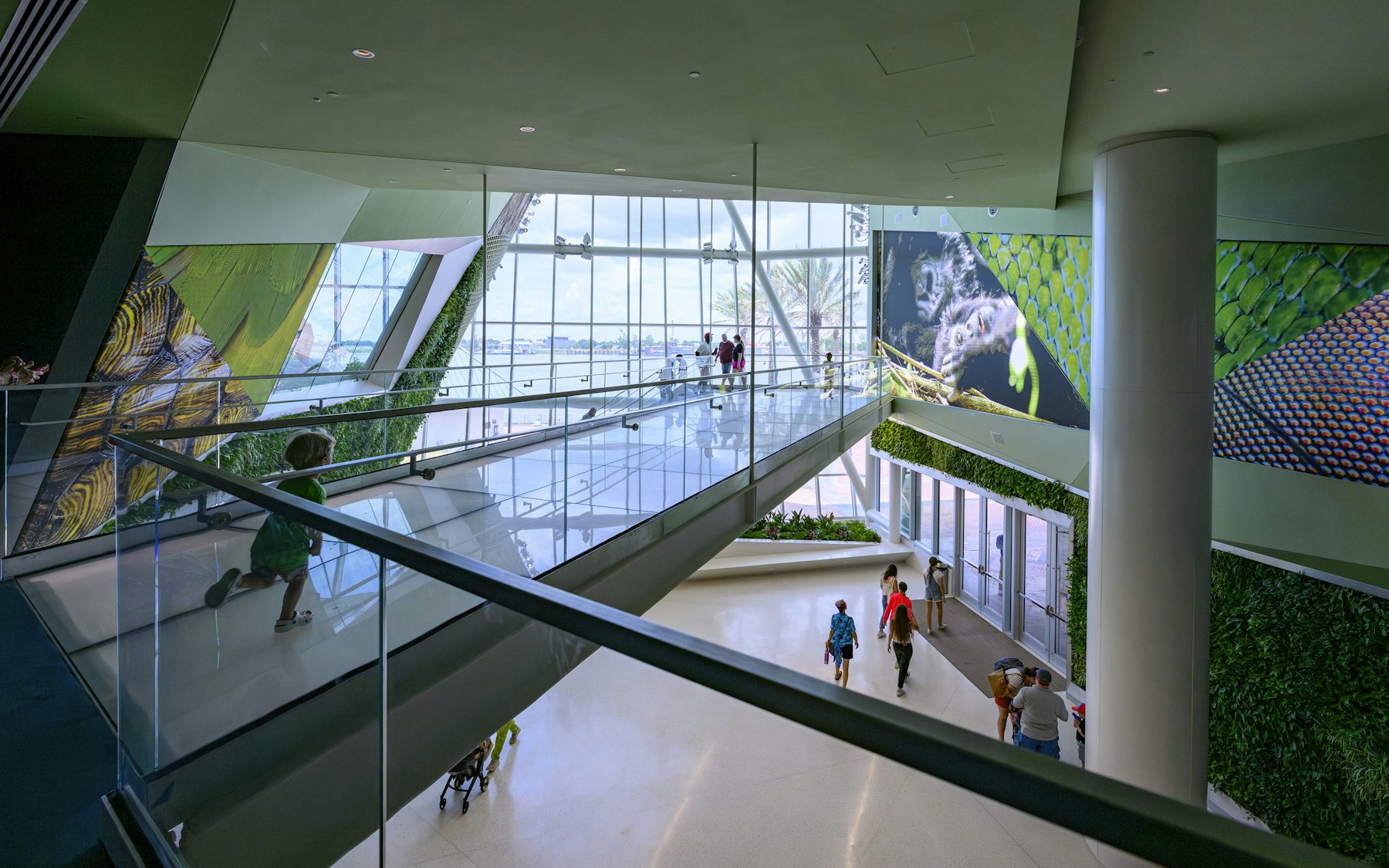
The updated entrance to the Aquarium of the Americas and Insectarium serves as an un-ticketed, revitalized first impression for visitors and a physical embodiment of the organization’s stewardship mission.
A translucent, suspended catwalk divides the double-height space, providing dramatic views to the river and an opportunity to engage the grandeur of the lobby space from all directions. The expanded two-story lobby not only creates space for improved visitor services, but features living green walls, colorful tensile artistic murals, and a dramatic LED installation with an introductory video production on Audubon Institute’s mission, attractions and programs.
As the initial and culminating experience in the visitor journey, the new lobby serves as a liminal space between Audubon and the world beyond—a chance to both introduce guests to the splendor of the nature and inform them of their stewardship duties upon re-entering the “real world.”

The design of the new expansion took inspiration from nature and the animals and insects occupying the space.
The new exhibit space for the Insectarium, consisting of 17,000 SF, takes the place of the space previously occupied by the Entergy Giant Screen theatre. Highlights of the Insectarium experience include an eye-catching, curvilinear super-graphics passageway containing both refreshed live insect vivariums and new interactive exhibits, a diversity arcade of dramatic live exhibits enhanced with sound and light, an all-new Mississippi River-facing Bug Appetite Café where visitors can actually order insect delicacies, an immersive and interactive electronic firefly and butterfly “wow wall,” and a fully immersive butterfly garden. All combine to “make the small BIG” and educate visitors about the value of insects and their essential place in a healthy earth biosphere.
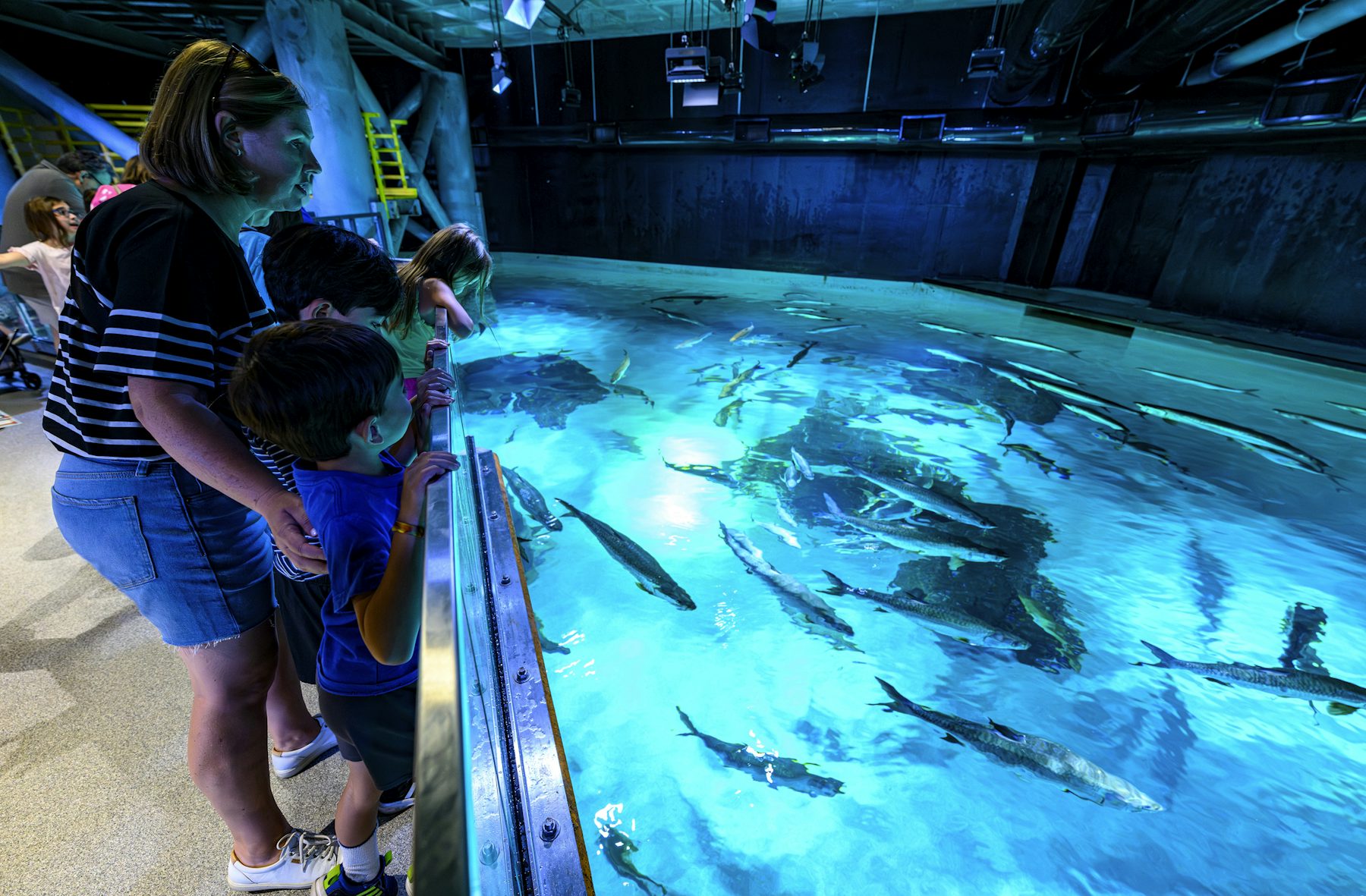
The newly accessible, 400-000-gallon Top-of-Gulf Tank welcomes all visitors to engage in live gallery presentations on behind-the-scenes life of this aquatic world and the care and feeding of the spectacular animals, such as giant sea turtles, sharks and other tank inhabitants.
An example of Principal-in-Charge Mark Ripple’s dynamic sketches for the new expansion highlight the firm’s effort to reflect natural design forms within the building’s structure and tie the new addition seamlessly into the language of the existing building.
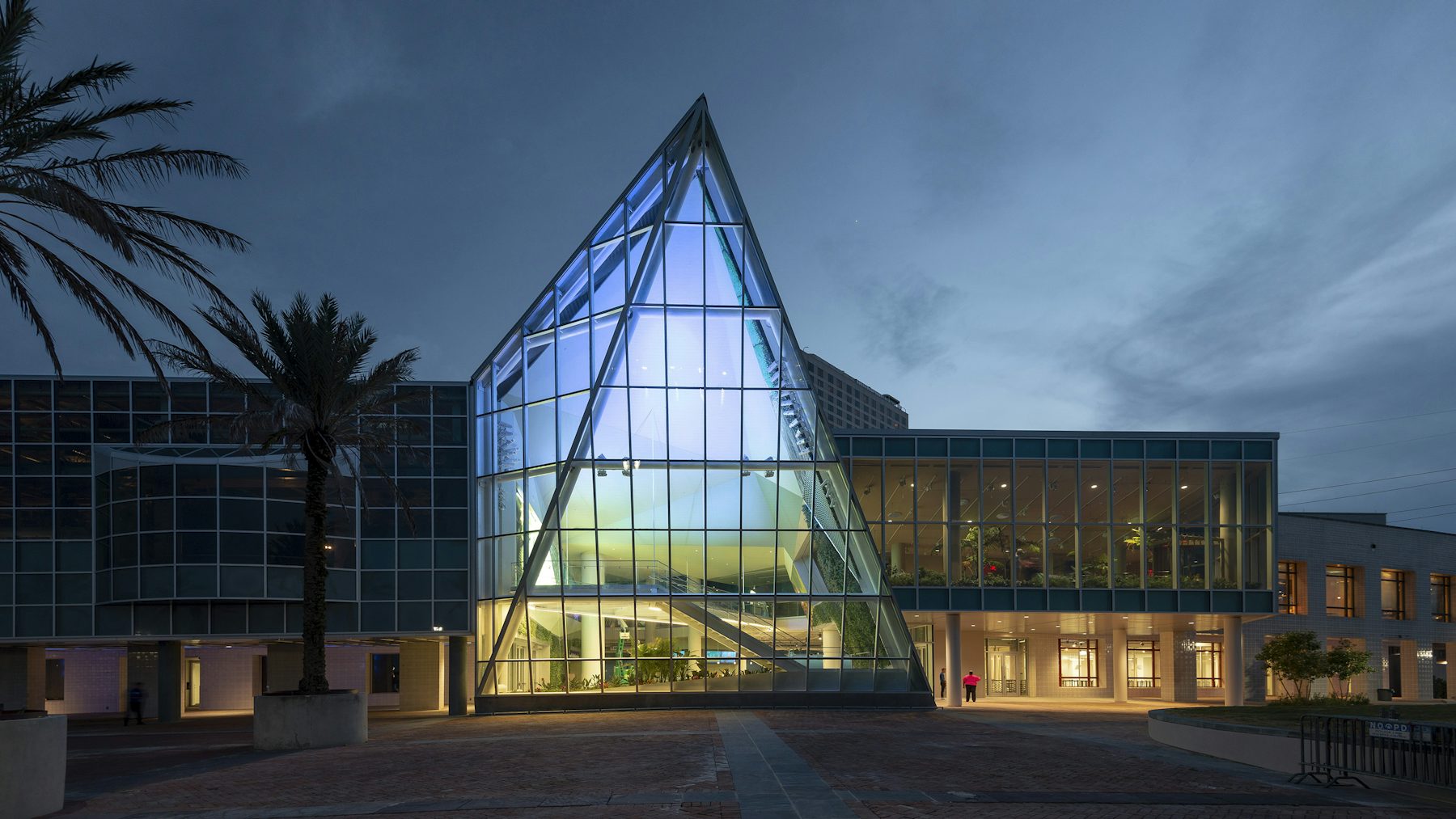
Sited along the New Orleans riverwalk adjacent to the Mississippi River, the new exterior façade possesses translucent and iridescent qualities. Inspired by nature, and in a dramatic gesture to the original building’s massing, a soaring crystal rises and dramatically extends out from the side of the façade, serving as a clear signal for single-entry to both Aquarium and newly relocated Insectarium.
The exterior is newly restored, bird-safe glass specified and installed along the entire face of the entry. At night, a carefully orchestrated array of colored LED lights suffuses the interior of the lobby, causing the building to glow from within.
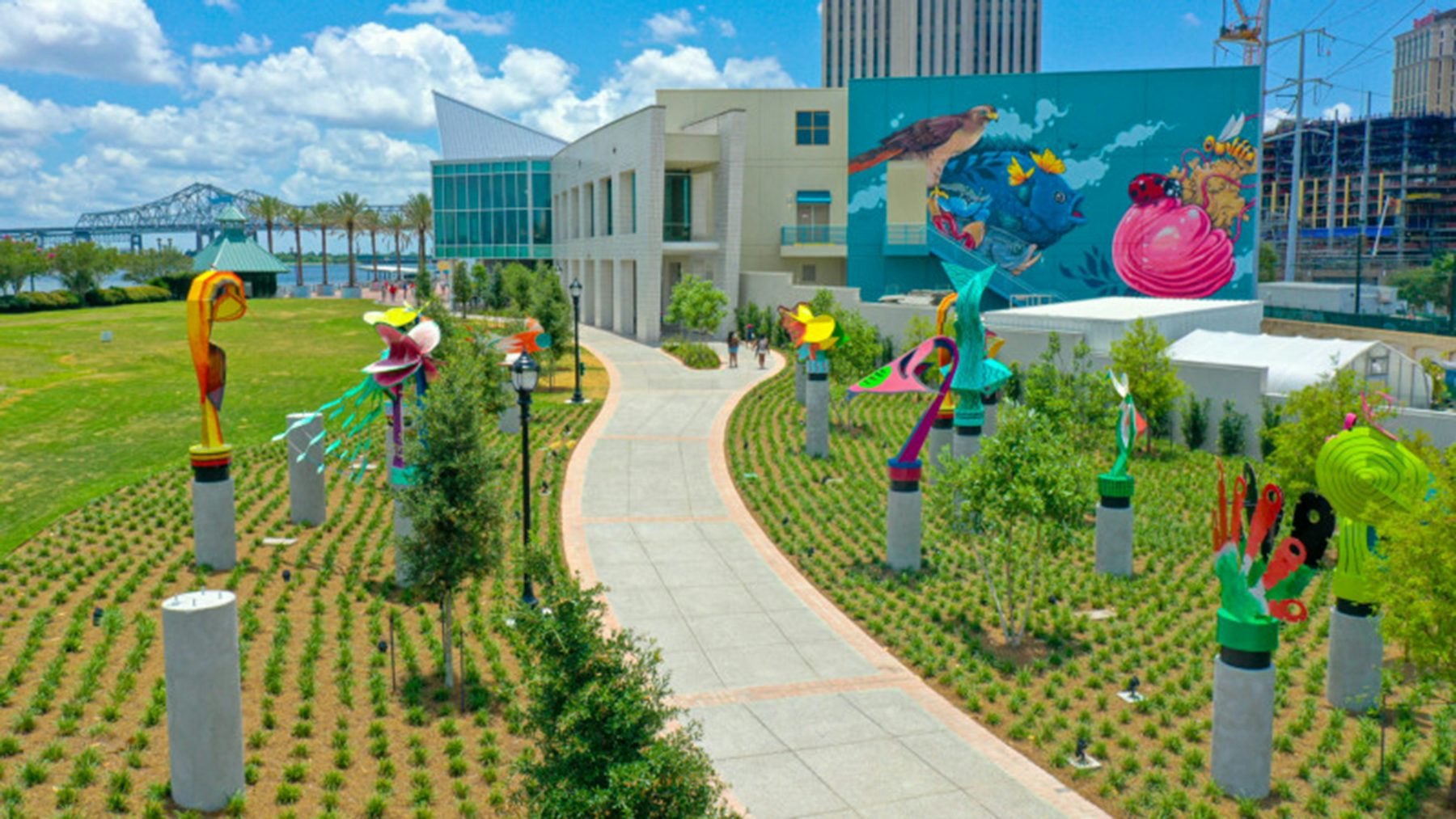
A new entry sequence follows a gracious landscape experience designed by Spackman Mossop and Michaels and a large-scale wall mural by artist Patrick Maxcy
Today, the new and transformed Audubon Nature Institute’s Aquarium and Insectarium are exciting additions to the recently revamped Canal Street Waterfront. The new Aquarium and Insectarium join several recent urban projects that refresh this important and historic part of the city, including the reimagined Canal Street Ferry Terminal, the renovated Spanish Plaza, as well as the new Four Seasons Hotel and Residences. All of these projects are part of a major effort to provide new experiences on the Mississippi waterfront and reinvigorate the end of Canal Street as a major visitor destination.
